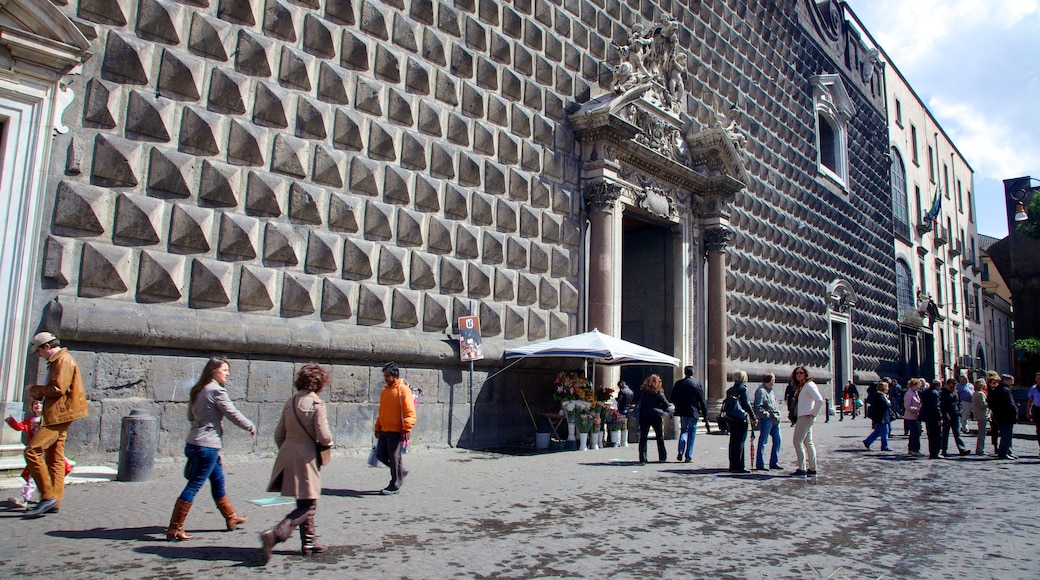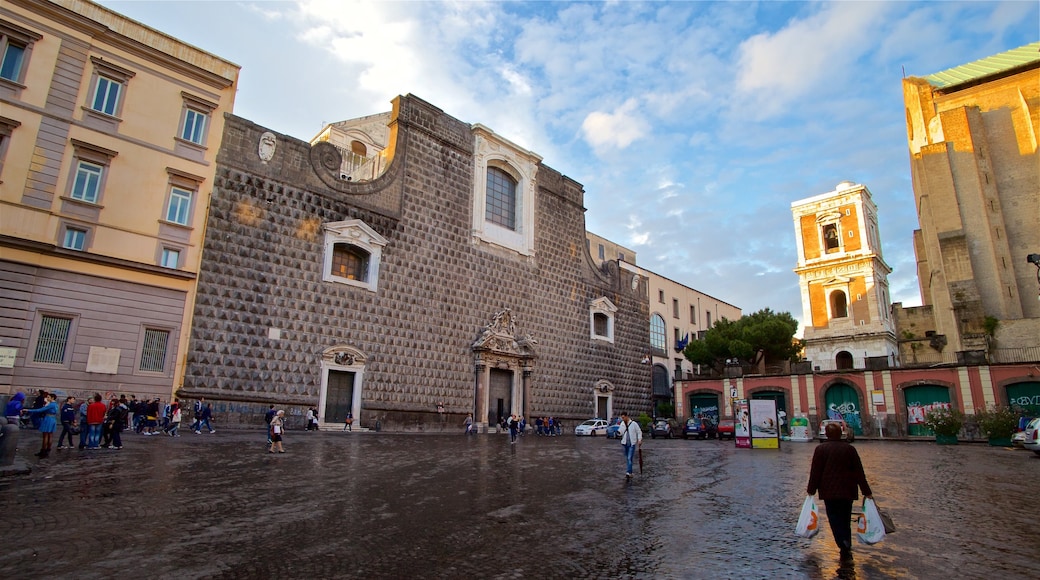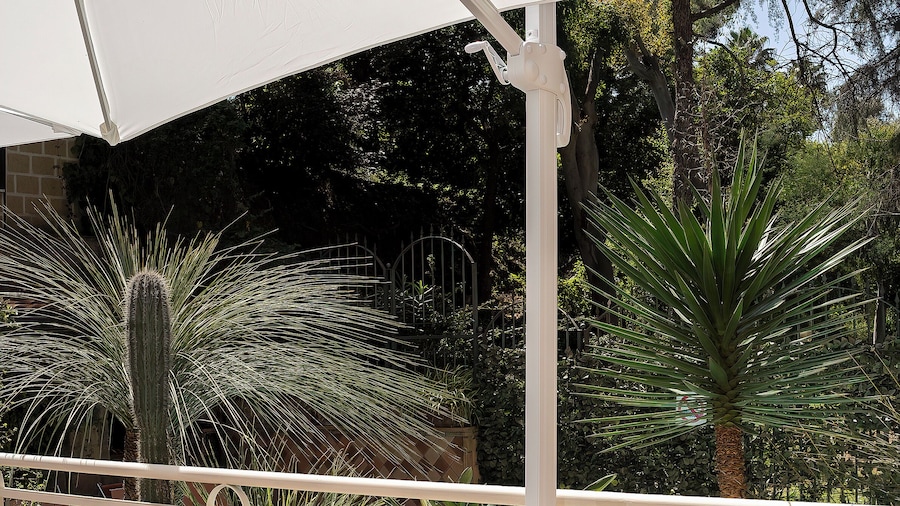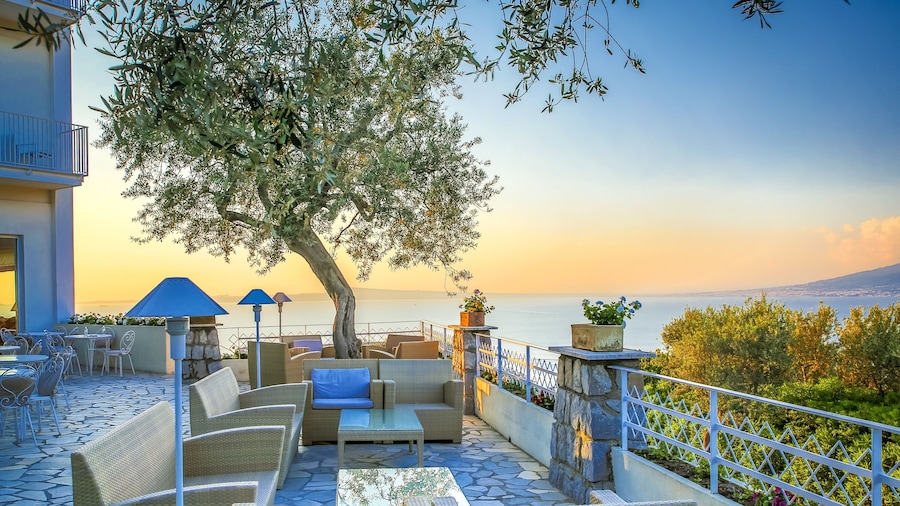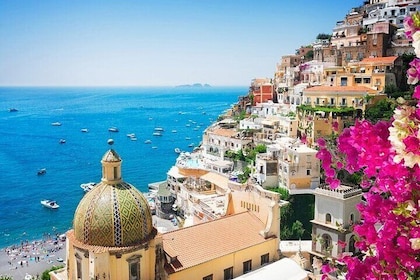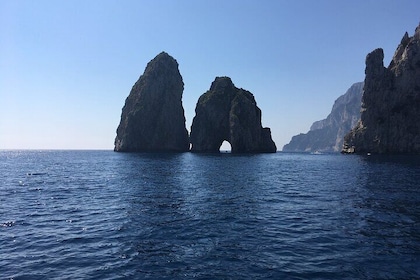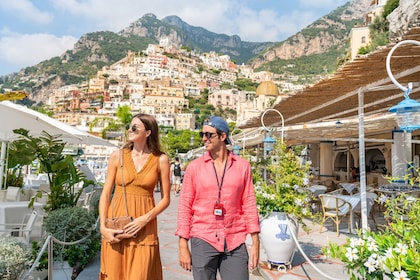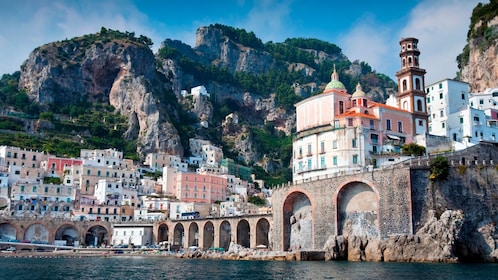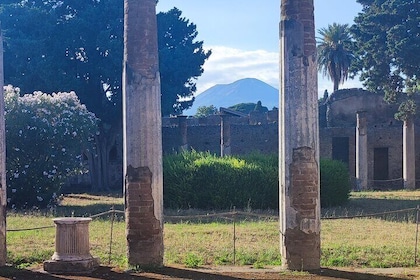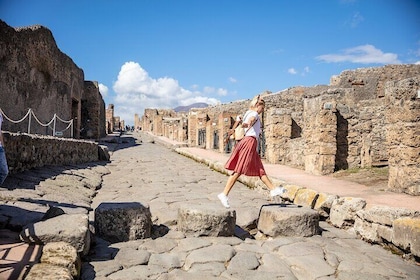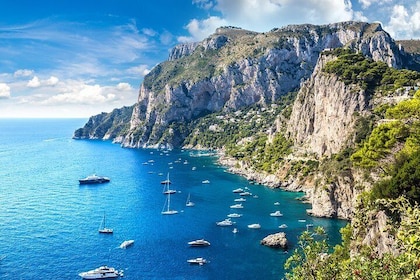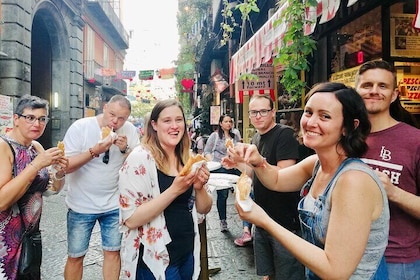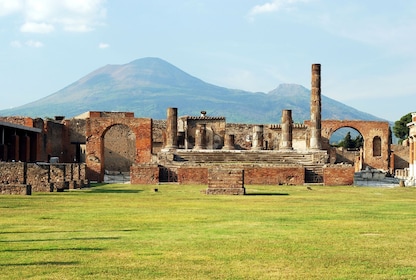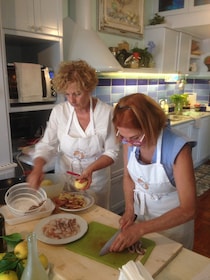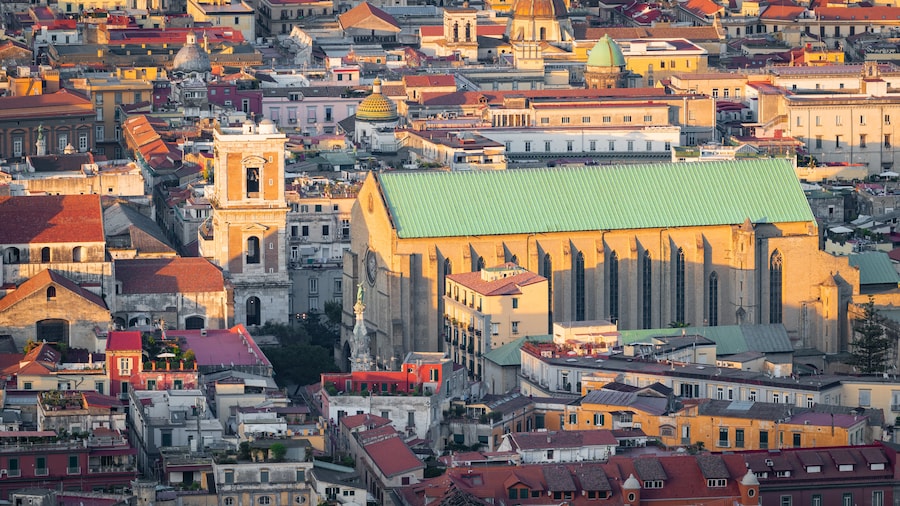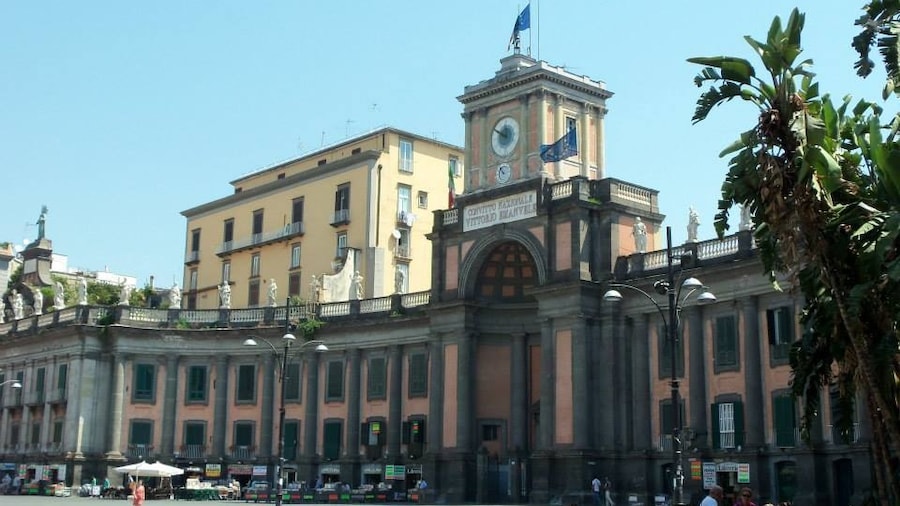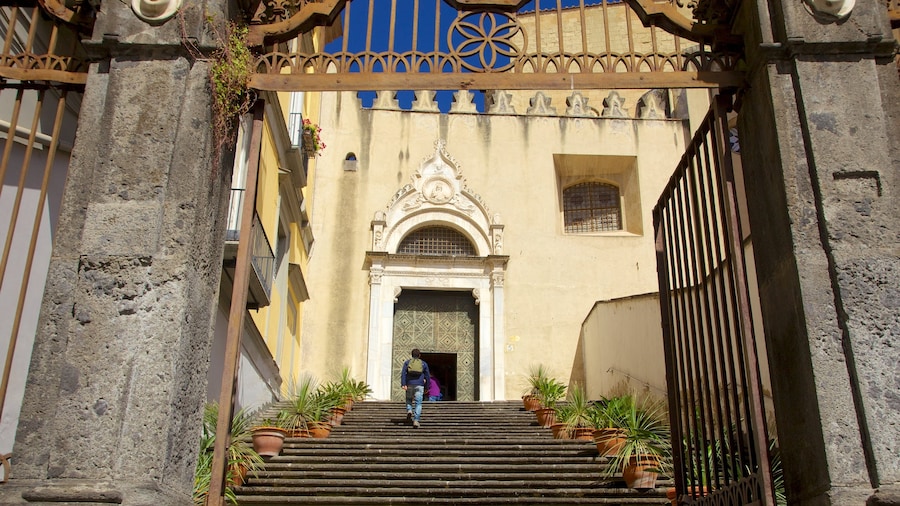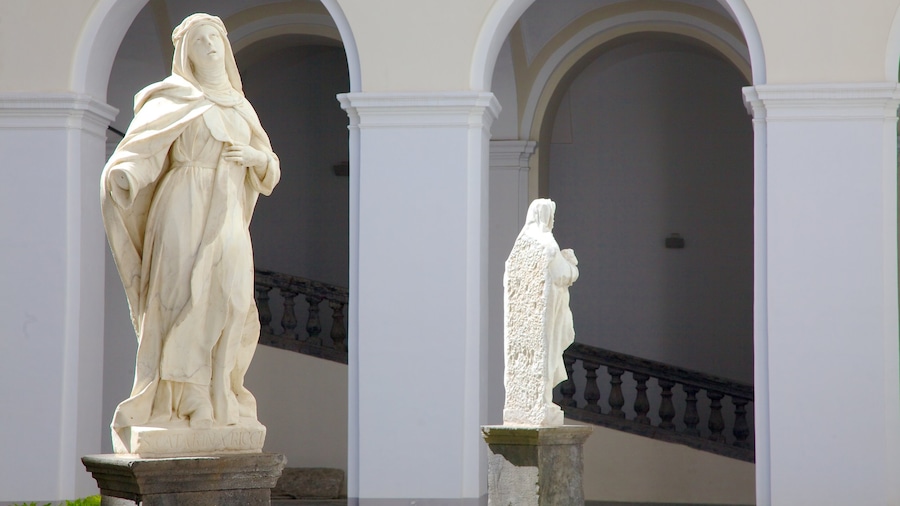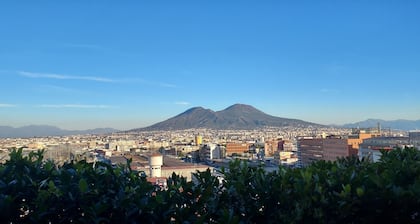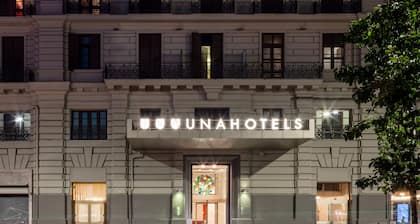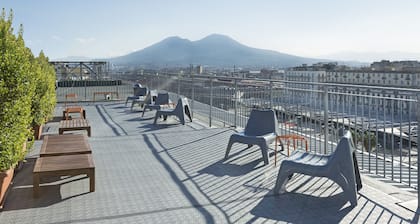Gesu Nuovo, or New Jesus, was built as a palace in 1470. Jesuits converted it to a church and retained the original palace facade. Various chapels and artworks have been added over the years, creating a diverse mix of architecture and art. Today, you can find gothic and baroque architecture along with many examples of Italian religious art, including frescoes and sculpture.
Step inside the cavernous interior of the Gesu Nuovo Church and walk up one of the three aisles leading toward a marble altar. Take a seat in the back and look up toward the dome. The intricate, gold-painted detail of the ceiling compares with the best religious murals in the Vatican. Many impressive frescoes, sculptures and paintings around the church tell religious narratives.
Works in the vault of the church by Italian artist Massimo Stanzione follow the life of the Virgin Mary. There is also a relief of Leonardo da Vinci’s Last Supper. At the altar, see the bronze urn that contains the ashes of St. Joseph Moscati, a Neopolitan physician who died in 1927 and was canonized in 1997. The Moscati room traces the physician’s work through photographs and tells the story of his beatification.
The Spire of the Immaculate Virgin dominates the square outside the church. This 111-foot (34-meter) structure was completed in 1750 and celebrates the protection of locals from the Black Plague.
Visit the many different chapels within the church, including the Chapel of St. Francis Xavier and the Sacred Heart Chapel.
The Gesu Nuovo Church is a short walk west of the historical center of Naples. The closest metro station is Dante. Find several cafés and restaurants on the Piazza del Gesu Nuovo. Stop here for lunch or grab a coffee and watch the people gathering around the church and the spire.
